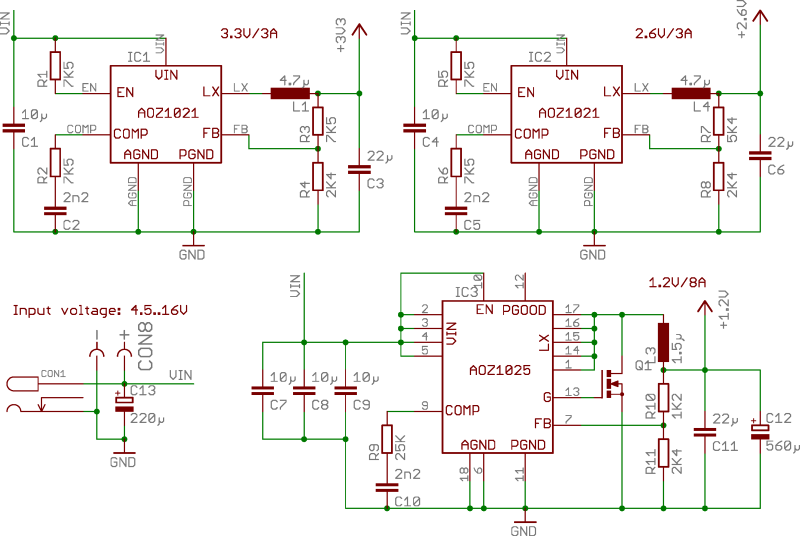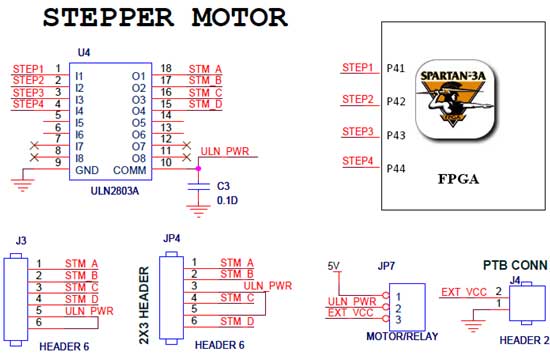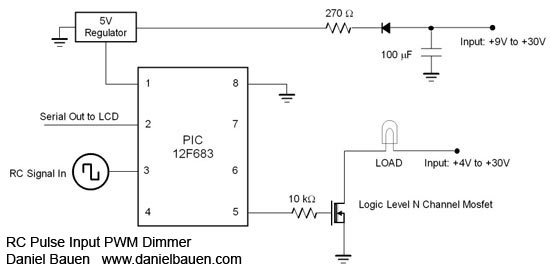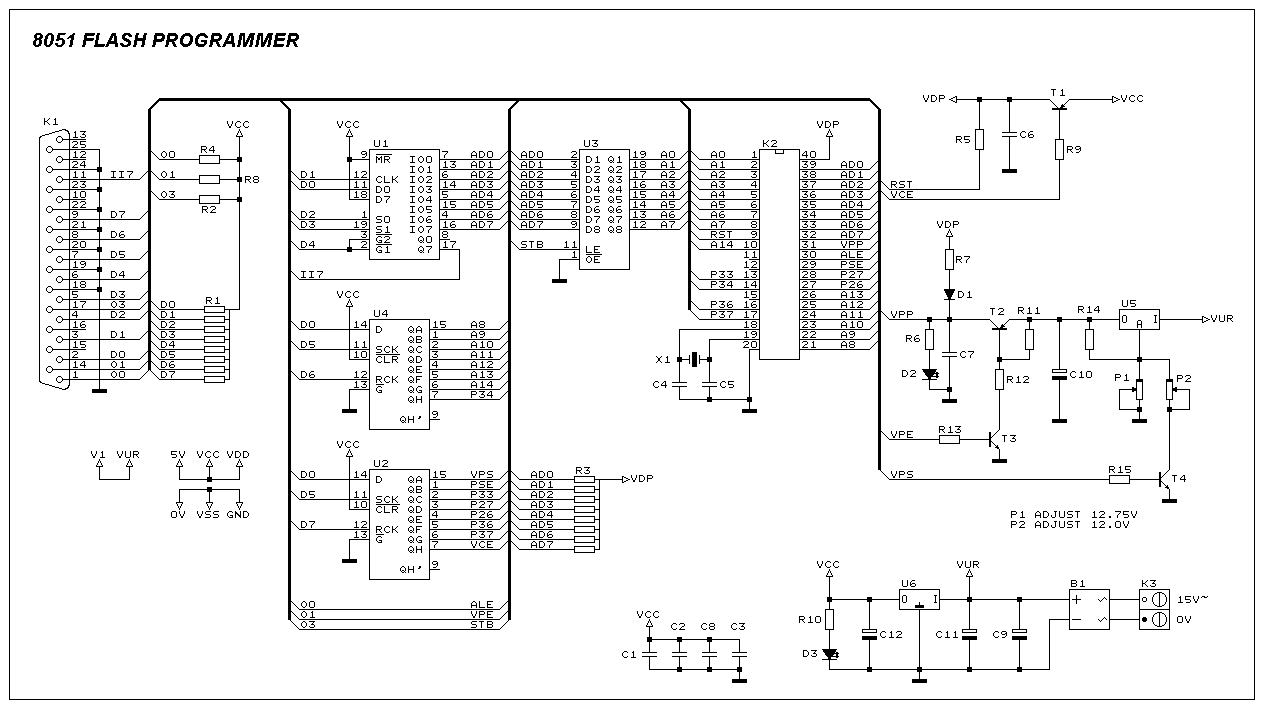
Reference designs for Series 1 FPGA Boards

ZTEX USB-FPGA Boards require three different voltages: 1.2V, 2.5V-2.6V, and 3.3V, which must be supplied externally. This can be achieved using Power Supply Modules, Experimental Boards, or a user-specific design. To facilitate development in the latter scenario, three reference power supplies are presented here.
The ZTEX USB-FPGA Boards necessitate precise voltage levels for optimal performance, making external power supply arrangements critical. The required voltages are 1.2V, 2.5V to 2.6V, and 3.3V, each serving different components within the FPGA architecture.
To supply these voltages, several options are available. Power Supply Modules can be utilized, which are designed to provide a reliable and stable output. These modules typically include features such as over-voltage protection, over-current protection, and thermal shutdown, ensuring the safety and longevity of both the power supply and the FPGA board.
Alternatively, Experimental Boards can be employed. These boards often come with adjustable outputs, allowing for fine-tuning of the voltage levels to meet the specific requirements of the ZTEX USB-FPGA Boards. They also provide a convenient platform for testing various configurations and ensuring compatibility with different FPGA models.
For users seeking a tailored solution, a user-specific design can be implemented. This may involve designing a custom power supply circuit that meets the exact voltage specifications. In this case, three reference power supplies are suggested to guide the development process. Each reference power supply should be capable of delivering the necessary voltage with minimal ripple and noise, as these factors can significantly affect the performance of the FPGA.
In summary, ensuring the correct voltage supply is essential for the operation of ZTEX USB-FPGA Boards. By utilizing Power Supply Modules, Experimental Boards, or custom designs, developers can create a reliable power source that meets the specific needs of their projects. The inclusion of reference power supplies serves as a valuable resource for those pursuing a user-specific design, facilitating a smoother development process.ZTEX USB-FPGA Boards require three different voltages, namely 1. 2V, 2. 5V-2. 6V and 3. 3V, which must be supplied externally. This can be done by using Power Supply Modules, the Experimental Boards or by a user specific design. In order to simplify the the development in the latter case three reference power supplies are presented here.
🔗 External reference
The ZTEX USB-FPGA Boards necessitate precise voltage levels for optimal performance, making external power supply arrangements critical. The required voltages are 1.2V, 2.5V to 2.6V, and 3.3V, each serving different components within the FPGA architecture.
To supply these voltages, several options are available. Power Supply Modules can be utilized, which are designed to provide a reliable and stable output. These modules typically include features such as over-voltage protection, over-current protection, and thermal shutdown, ensuring the safety and longevity of both the power supply and the FPGA board.
Alternatively, Experimental Boards can be employed. These boards often come with adjustable outputs, allowing for fine-tuning of the voltage levels to meet the specific requirements of the ZTEX USB-FPGA Boards. They also provide a convenient platform for testing various configurations and ensuring compatibility with different FPGA models.
For users seeking a tailored solution, a user-specific design can be implemented. This may involve designing a custom power supply circuit that meets the exact voltage specifications. In this case, three reference power supplies are suggested to guide the development process. Each reference power supply should be capable of delivering the necessary voltage with minimal ripple and noise, as these factors can significantly affect the performance of the FPGA.
In summary, ensuring the correct voltage supply is essential for the operation of ZTEX USB-FPGA Boards. By utilizing Power Supply Modules, Experimental Boards, or custom designs, developers can create a reliable power source that meets the specific needs of their projects. The inclusion of reference power supplies serves as a valuable resource for those pursuing a user-specific design, facilitating a smoother development process.ZTEX USB-FPGA Boards require three different voltages, namely 1. 2V, 2. 5V-2. 6V and 3. 3V, which must be supplied externally. This can be done by using Power Supply Modules, the Experimental Boards or by a user specific design. In order to simplify the the development in the latter case three reference power supplies are presented here.
🔗 External reference





